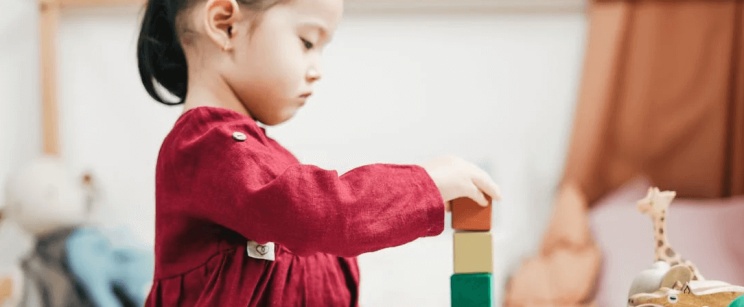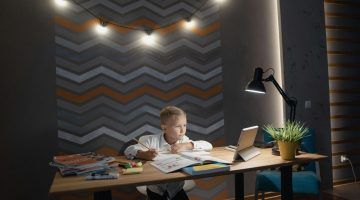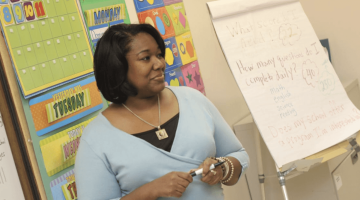How to Teach One-to-One Correspondence
reviewed by Jo-ann Caballes
Updated on June 30, 2025
To succeed in math, students should steadily build on their knowledge of math concepts. Inevitably, one-to-one correspondence is that skill that creates the ground for mastering counting and number sense. In this article, we explain what it is, provide the best one-to-one correspondence activities, and show why you and your child should take time to build this skill.
What is one-to-one correspondence?
One-to-one correspondence is an early math skill in which students learn to count in ascending order while moving objects in a set, one at a time. The skill is usually developed in toddlers and preschoolers to help them successfully proceed with counting rules.
Learning and mastering one-to-one correspondence requires you to have several similar objects at hand. As the child learns to count, they assign one number to one object and move it to a separate pile. This way, they get one pile of already enumerated objects and another of those still waiting for their numbers.
But eventually, how do you know when your child excels in the skill? Those children who succeeded can easily count without skipping numbers or touching each object more than once.
Strategies for Teaching One-to-One Correspondence
Some powerful strategies for developing strong one-to-one correspondence skills include:
Real-world connections
Children should understand the real-world application of their skills. So, you should teach them to connect what they’ve learned to daily situations. For example, you can ask them to count fruit on a table or chairs in a room.
Visual representations
You can use dots or slashes to represent quantities on paper. This way, those marks work to substitute real-world representations. Draw them on a piece of paper and ask your child to match each with a corresponding number. The practice reinforces visual memory — the pillar of 1:1 correspondence.
Hands-on manipulatives
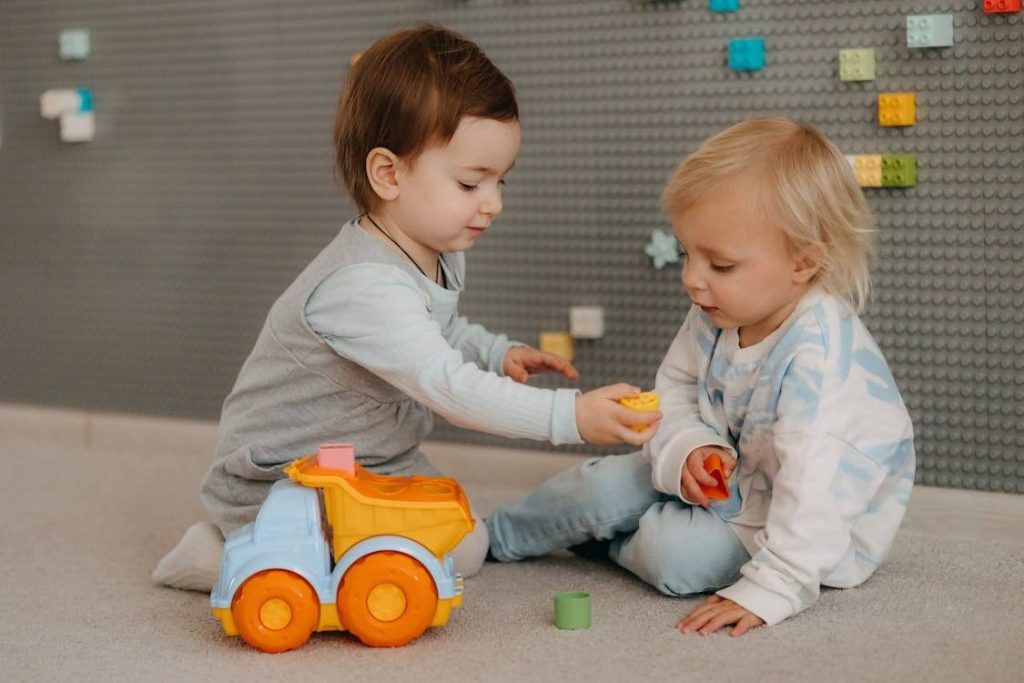
Make sure that the manipulatives you give to your child are of interest to them. These can include blocks, cons, buttons, and even some tasty snacks — everything you can think of. Then, ask your child to touch upon an object as they name a number. As they master this, ask them to move each numbered item individually to form a separate pile.
Counting games
Even the simplest games will suit here. For example, you can ask your child to match numbers with objects or involve several children in a group-counting activity. These games make learning more fun, just what kids like. They also reinforce communication and build bonds between children.
One-to-one correspondence in Brighterly curriculum
Brighterly is that very place where your child can quickly acquire one-to-one correspondence skills. The success secret is in the game format they use! Teachers at Brighterly do their best to keep the learning process engaging. They know that the younger their students, the more they depend on teaching methods.
That’s why much attention is paid to learning techniques and strategies. Here’s how the flow goes, from the moment your child starts learning the topic till when they become proficient in it:
- First, children are introduced to the concepts of numbers. It is the fundamental step of teaching one-to-one correspondence math, and it’s also where children learn to interconnect each number with a specific quantity.
- In the next stage, kids work with physical objects representing specific numeric values. But, since the lessons with Brighterly tutors take place online, kids grasp the visual representation of objects on their screens instead. Then, your child learns to count the objects they see, thus better understands quantity concepts.
- At this point, kids learn to match objects one to one. This way, they understand that one number stands for an exact one object.
- Once kids have grasped the basics, Brighterly tutors build on their knowledge with more complicated tasks. These usually include day-to-day situations where kids create actual associations.
This steady flow can help the children learn one-to-one correspondence at their convenient pace, without rushing, and in a catchy game form. Does this sound like the right solution for your kid? Then why not book a free demo lesson today and test out all the benefits?
What are the best ways to teach one-to-one correspondence?
To escalate in one-to-one correspondence, you should help your child to:
- Create real-world connections between numbers and objects
- Employ their motoric skills to improve counting abilities
- Understand the concepts through a game format
However, the options don’t stop there! These are just a few fun game tasks to help your kid learn one-to-one correspondence.
Counting gems
What do you need?
Paper or flashcards, colorful gems, and writing utensils.
What’s the flow?
- Draw any shape you like on a piece of paper.
- Divide the shape into several sections with horizontal or vertical lines.
- Pour gems onto the table.
- Ask your child to match each gem with a corresponding shape section and put it under the paper once done.
Counting gummy bears
What do you need?
A dice, gummy bears (or any other catchy snack you like), counting worksheet.
What’s the flow?
- Roll the dice. Once you get a number, ask your kid to count the dots.
- Ask them to take the same number of gummy bears as specified on the dice and put them on the worksheet under the corresponding number.
- Once your child masters counting from 1 to 6, you can add another dice and proceed with the same flow.

Ice cube tray
What do you need?
Empty ice cube tray, dice, and any small objects to fill the tray.
What’s the flow?
- Roll the dice and ask your child to count the dots you’ve received.
- Then, ask them to place the corresponding number of objects inside the first hole in your tray.
- Keep rolling the dice till you fill in all tray holes.
But the excitement doesn’t stop there! You can find multiple tasks on the topic in this one-to-one correspondence worksheet. It’s where you get 20 exclusive colorful activities sorted conveniently. You can print it or use it in the online format — choose which option suits you better. These are just a few exemplary tasks. Much more awaits inside.
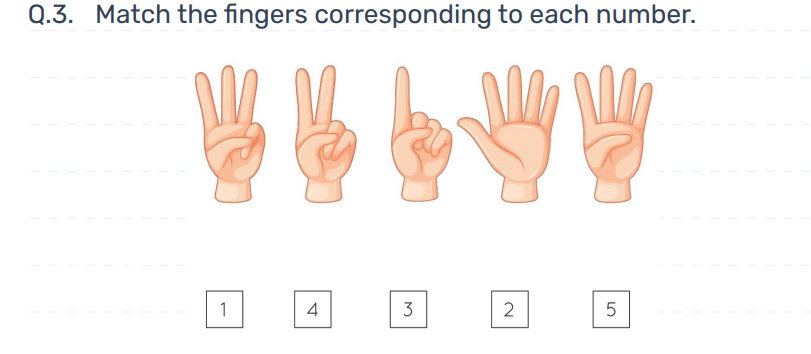

Why is one-to-one correspondence important?
Math one-to-one correspondence is of great importance because it introduces children to the basics of counting. It specifically shows kids how to count in ascending order using funny objects.
At this point, you might think this skill is only helpful for kids, and its applications remain in childhood. But things are more complicated than that. What if you learn that adults also use math correspondence?
Yes, the well-familiar one-to-one correspondence examples everyone encounters are cooking recipes. Remember when you last cooked something? You meticulously counted the ingredients and matched the ready-made dish with the servings you could receive. Or think about your last store visit. You had to count how much each item cost to know the total.
Now, the main benefit of acquiring this skill at an early age is that it serves as a solid ground for building further knowledge — addition, subtraction, and algebra multiplication — all these skills are rooted here. Eventually, kids who don’t master math correspondence can hardly succeed in the long run. So, make sure your child gets enough practice on the topic!
Benefits of learning one-to-one correspondence
The primary benefit your child will get is precisely what we’ve just discussed — a solid ground to build their future knowledge. But there’s more! Activities that promote one-to-one correspondence support other invaluable elements like a child’s cognitive development, understanding of math, and overall academic success. These are some common advantages to expect:
1. The best ways to teach one-to-one correspondence can also enhance cognitive abilities. Here’s how it works: while kids master correspondence, they spend much time counting, matching, and sorting items. All these activities require focus and concentration and will inevitably improve your child’s memory and critical thinking.
2. The correspondence concepts help children understand the essence of numbers. They now know that each number stands for a single unit. Later, they will use this basic to complete any math operations.
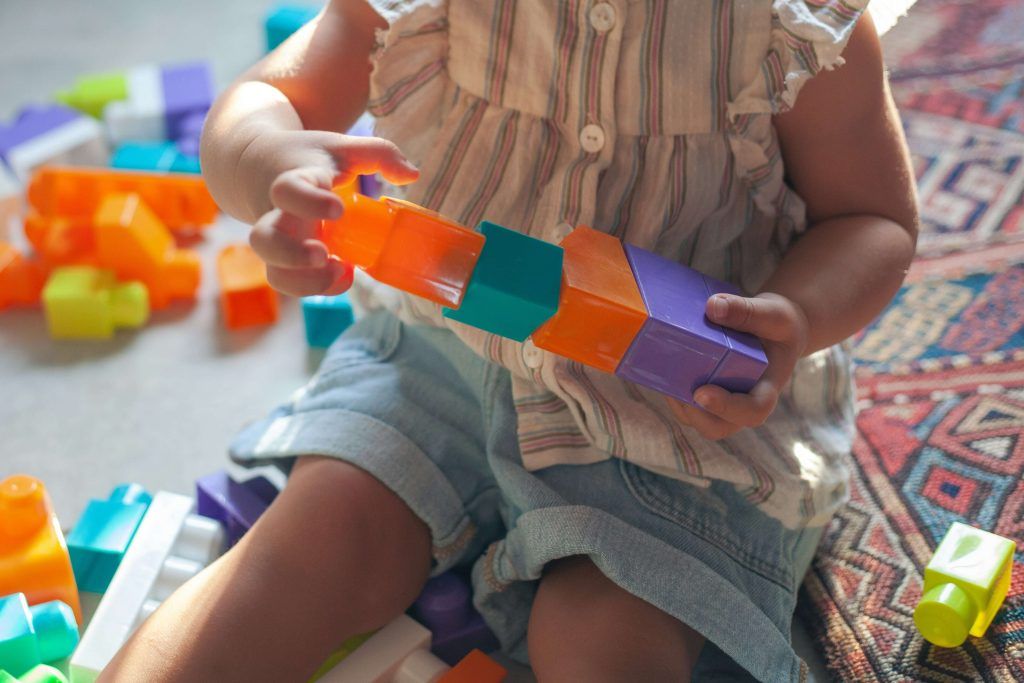
3. Finally, learning one-to-one correspondence will help to improve your child’s motor skills. While practicing, they have to do quite a lot of hand work: moving objects, placing them in order, counting materials, and so on. All these processes require intense hand-eye coordination. Besides, they strengthen finger muscle and hand control — just what’s needed while taking up writing soon after.
To conclude
As you can see, one-to-one correspondence activities are the individable components of the math subject. And they do carry many benefits for your child! Getting hands-on practice with numbers, building sufficient knowledge for math operations, and practicing cognitive skills are just a few benefits to list.
Is that enough to convince you of the value of math correspondence? If you answer yes, it may be the right time to book a demo lesson with Brighterly and start practicing in a convenient 1:1 format!

